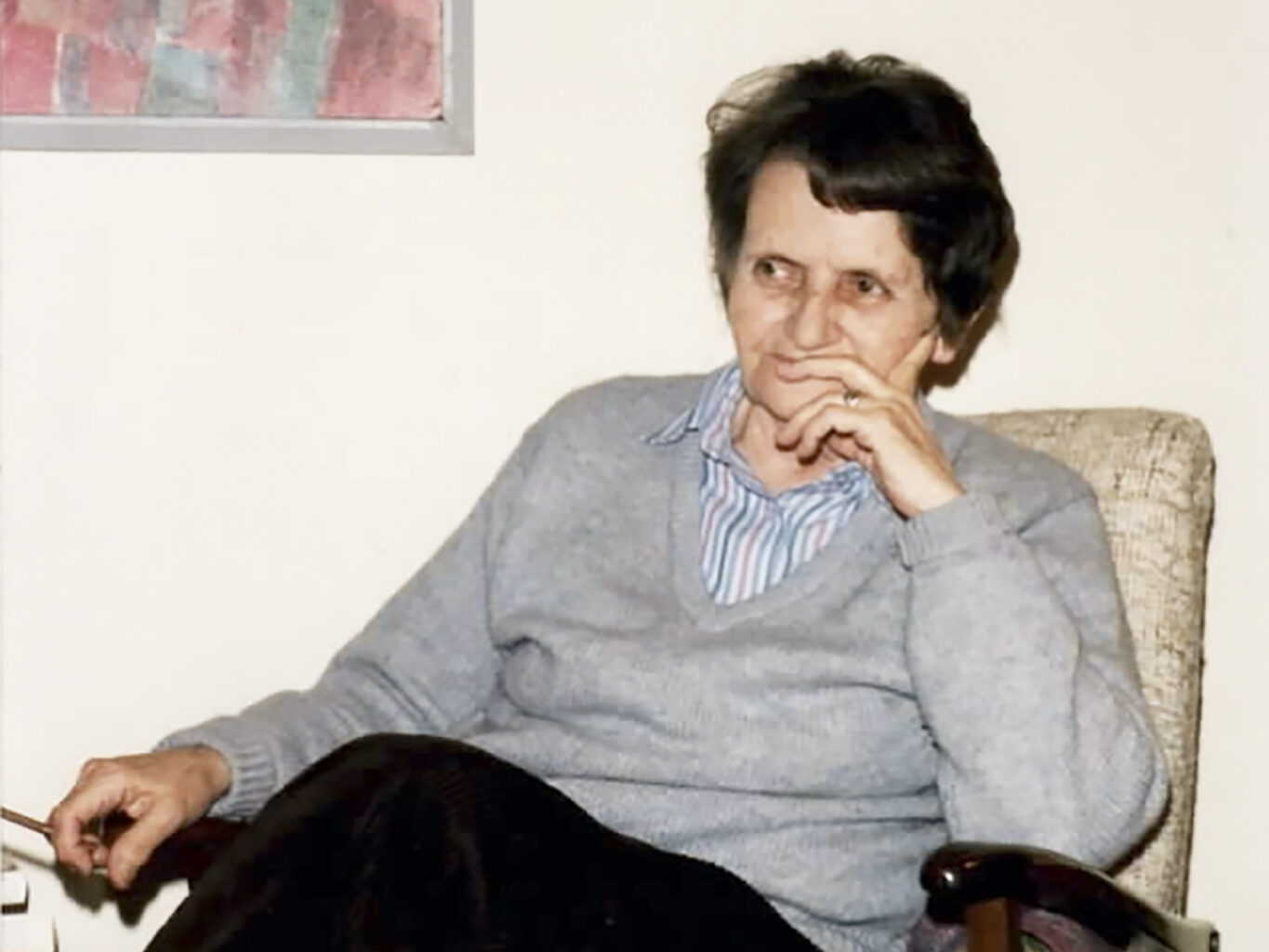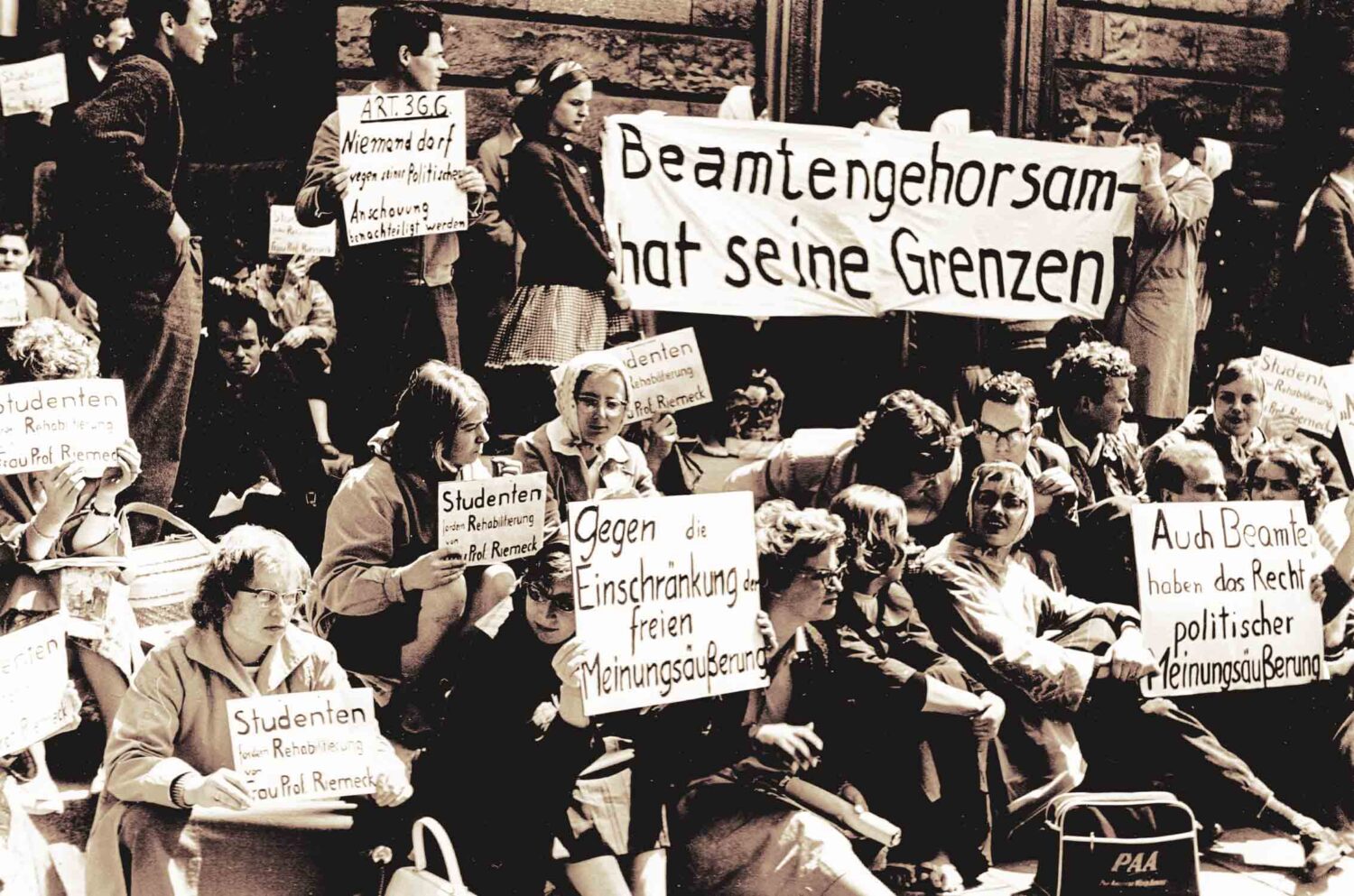Albert Vinzens’ remarkable biography of Renate Riemeck (1920–2003)1 succeeds in sketching a detailed and authentic picture of his subject. Vinzens considers (and I certainly concur) that Riemeck’s masterpiece was her lectures in Marburg on the pioneers of education (chapter 8), which were published posthumously through funding by the Software AG Foundation.2
In these lectures, Riemeck presented and contextualized pioneers of pedagogy, including Leo Tolstoy, who founded a very special new type of school for the children of his serfs; John Dewey, who invented problem-based learning in his laboratory school in Chicago; John Amos Comenius and many others, with the approaches of Goethe, Pestalozzi, and Steiner prominently in the forefront.
Riemeck’s lectures, held in an overflowing lecture hall, are the mature fruit of a long period of theoretical and practical work. “Unlike many university professors, Riemeck writes her scientific contributions” and holds her lectures “with existential force.” “For her, the experience of her own inner life is an important component of scientific knowledge.” (p. 164) Along this path, Riemeck created a philosophy of education that connects pedagogy with the deepest questions of human existence, a new perspective on what Waldorf educators refer to as “general anthropology.”3
Riemeck was always available to give talks on educational issues and engage in conversation. You only had to ask. She would explain to parents and teachers what Waldorf education was by beginning with a picture of the contrasting approaches of Tolstoy and Dewey, and then asking what a middle way might be like. She was able to broaden the minds of those stuck in a one-sided view and would bring life into the search for understanding. One lecture ended up developing into a wholly new series of lectures with the audience continuing to grow.

From the book
Appeal for Peace
Out of the initiative of Renate Riemeck, forty-four university lecturers published an appeal on February 26, 1958, calling for a demonstration by the trade unions against nuclear armament. The appeal went down in anti-nuclear history as the Appeal of the 44 [Appell der 44], and together with the Göttingen Manifesto [Göttinger Manifests der Göttinger 18], became the initial spark for a broad extra-parliamentary opposition. Thus, Renate Riemeck’s entry into politics was actually paved relatively late. On March 25, 1958, a majority in the German parliament decided to arm their military with nuclear weapons, planning to carry through the order the following year. The opposition immediately prepared referendums, and the parliament of the Free and Hanseatic City of Hamburg and the state of Bremen took concrete steps towards a vote. Two days later, the Federal Constitutional Court suspended the referendums, and protests began to grow. The general mood against nuclear armament became so strong that three days after this decision, the newspaper, Bild [Picture], ran the headline: “Nuclear armament? BILD readers say: NO” [Atom-Bewaffnung? BILD-Leser sagen: NEIN] [Dec. 14, 1957]. The appeal initiated by Riemeck was met with great approval.
The Appeal of the 44 lies in the tradition of the Göttingen Manifesto [April 12, 1957]. What was new about Riemeck’s initiative was that professors were talking to members of the trade unions. Nearly fifty well-to-do civil servants were opposing the state and joining forces with representatives of the working class. Some of the signatories, who had previously only spoken in the lecture hall, agreed to appear as speakers at mass demonstrations. “That moved me,” Renate Riemeck later commented. “When I imagine—1920—a professor standing up in front of the workers—he would have been done within his own circles at the university. But, they dared to do it.” She could not have known at the time that she herself would soon be expelled ex-cathedra. The political situation at the end of the 1950s was different from the 1920s, albeit similarly explosive. Thus began Riemeck’s decision to become politically active in the middle of her life.
Not a week went by without protests somewhere in Germany. Riemeck observed with astonishment the activities of leading SPD [Social Democratic Party of Germany] politicians such as Carlo Schmid, Herbert Wehner, and Fritz Erler, who were preparing the party for a right-wing course. She was quick and resolute in her opposition to this shift by the Socialists. While the SPD moved closer to the CDU [Christian Democratic Union of Germany], the sympathies between former Communists and opponents of rearmament grew closer to each other. Amongst the reorganizing of the various camps, Riemeck patiently collected signatures against rearmament and held lectures for peace.
(p. 176 f.); Photo: Renate Riemeck in Alsbach, ca. 1989.
Riemeck became homeless at an early age. When she left her hometown of Breslau as a child, with her parents, she had no idea that she would never see this city again. The school atlases that she published show Germany ending at the Oder-Neisse Line.4 She anticipated what only Willy Brandt5 was able to implement much later: reconciliation with neighboring countries, especially Poland, by apologizing for the crimes committed by the Third Reich and, at the same time, recognizing the new borders.
Despite the fact that she didn’t manage to lead her new peace party, the DFU (Deutschen Friedensunion) [German Peace Union], into the German parliament, she still had a big impact on society. Based on the documents from her estate, it is reasonable to conclude that it was largely thanks to her efforts that the Federal Republic of Germany was not armed with nuclear weapons, which Konrad Adenauer and Franz Joseph Strauß had declared to be a firm goal.6 In a licentious, authoritarian counter-attack by these circles, Riemeck was forced out of her professorship early on. No one other than the shrewd lawyer and later Federal President Gustav Heinemann7 would have been prepared to fight her case all the way to the Supreme Court, because it was freedom of opinion that was being stifled. But Riemeck could no longer hold out against the incessant attacks. Sadly, she made the decision to resign.
Her close relationship with her foster daughter, Ulrike Meinhof, was tragic, but she loved her to the bitter end.8 She never let her love for her be shaken, even when it became clear that Ulrike became hopelessly lost. Albert Vinzens also relates this heartbreaking story from Riemeck’s point of view, based on previously rare and unknown documents.
As a young schoolgirl inspired by an anthroposophical teacher, Renate Riemeck found her way to Dornach, despite all the obstacles posed by Nazi rule. There, she studied Faust and took part in the life in and around the Goetheanum. Riemeck was a liberal-minded anthroposophist. Her life was full of challenges and trials closely enmeshed with the events of the twentieth century. She faced these challenges with courage, confidence, and a never-failing sense of humor.

From the book
Sacrifice with a Heavy Heart
On December 13, 1960, the German Press Agency reported that Renate Riemeck had stepped down from her university position the day prior and had asked the Minister of Education and Cultural Affairs to accept her resignation. Riemeck’s concerns about political developments in Germany were cited as her main reason. She decided to devote herself “wholly to a policy of détente and understanding” and to dedicate herself to the cause of peace “without regard to personal security”. Three days before Christmas Eve, once it became known that their professor would be leaving, University of Wuppertal students organized a torchlight procession for Riemeck. On behalf of the participants, student Hans Christoph Berg read out a letter he wrote together with the student body to their departing lecturer on the university grounds: “Our thanks go out to our greatly revered history professor. We always admired her knowledge of facts, her seriousness, and her devotion. Our thanks go out to this great human being, who brought so much understanding and commitment for the students to her academic teaching position, so that our student body elected you as their trusted advisor every year. Last but not least, our thanks go out to the professor of political science, who not only talks about democracy, but lives it.” Berg—who himself became a professor and later taught for a long time as an educationalist together with Wolfgang Klafki9 at Marburg’s Philips University—later brought Renate Riemeck to Marburg as a guest lecturer. That day in Wuppertal, he ended the reading of his letter in an emotional voice: “We regret that you have sacrificed the lecturer to the politician, but we know that you have not made this sacrifice lightly, and we understand that we will have to do without our dearly revered lecturer, if she believes that she is needed in a wider field.”
(pp. 209/211); Photo: Student strike in front of the ministry, Düsseldorf 1960
Unless otherwise stated, all images are from the Renate Riemeck estate, Hamburg Institute for Social Research (HIS)
Translation Joshua Kelberman
Footnotes
- Albert Vinzens, Renate Riemeck: Historikerin, Pädagogin, Pazifistin. 1920–2003. [Renate Riemeck: Historian, educator, pacifist. 1920-2003.] (Göttingen: Wallstein, 2023).
- Renate Riemeck, Klassiker der Pädagogik von Comenius bis Reichwein. Marburger Sommervorlesungen 1981/1982/1983 mit Quellentexten. [Classics of pedagogy from Comenius to Reichwein. Marburg Summer Lectures 1981/1982/1983 with source texts.] (Mannheim: Tectum, 2014).
- Rudolf Steiner, Allgemeine Menschenkunde als Grundlage der Pädagogik [General Anthropology as a Foundation for Pedagogy], CW 293 (Basel: Rudolf Steiner Verlag, 2019). English version titled variously as The Study of Man: General Education Course (Rudolf Steiner Press, 1995); The Foundations of Human Experience (SteinerBooks, 1996); and most recently as, The First Teacher’s Course: Anthropological Foundations, Methods of Teaching, Practical Discussions (Ratayakom, 2021).
- “The German Democratic Republic (East Germany) signed a treaty with Poland at [Görlitz] on July 6, 1950, that recognized the Oder-Neisse Line as its permanent eastern boundary. . . . West Germany [refused] to recognize the line until 1970 . . . [when it] signed treaties with the Soviet Union and Poland acknowledging the Oder-Neisse Line as Poland’s legitimate and inviolable border.” Britannica, T. Editors of Encyclopaedia. “Oder–Neisse Line.” Encyclopedia Britannica, October 17, 2016.
- Willy Brandt, leader of the Social Democratic Party of Germany (1964–1987) and chancellor of West Germany (1969–1974).
- Konrad Adenauer, first chancellor of the Federal Republic of Germany (1949–1963); Franz Joseph Strauß, chairman of the Christian Social Union in Bavaria (CSU) (1961–1988), member of the federal cabinet (1953–1969), and minister-president of the state of Bavaria (1978–1988).
- Gustav Heinemann, President of West Germany (1969–1974).
- Ulrike Meinhof (1934–1976), German journalist and radical leftist who later became a left-wing terrorist. She took part in the May Offensive of the Red Army Faction in 1972, was arrested in June 1972 and spent the rest of her life in custody, largely isolated from outside contacts. . . . In 1975, she and the other RAF leaders were charged with four counts of murder and 54 counts of attempted murder in the Stammheim trial. Before the trial ended, she was found hanged in her cell in the Stuttgart-Stammheim prison. “Ulrike Meinhof,” Wikimedia Foundation, last modified March 9, 2024 (Translated from the German Wikipedia).
- Wolfgang Klafki (1927–2016), German educationalist, inspired Martin Wagenschein among others, and played a key role in shaping educational didactics based on the ideas of a humanities-based education [Geisteswissenschaftliche Pädagogik] that views education as a spiritual, cultural, and historical phenomenon. “Wolfgang Klafki,” Wikimedia Foundation, last modified March 3, 2024 (Translated from the German Wikipedia).





